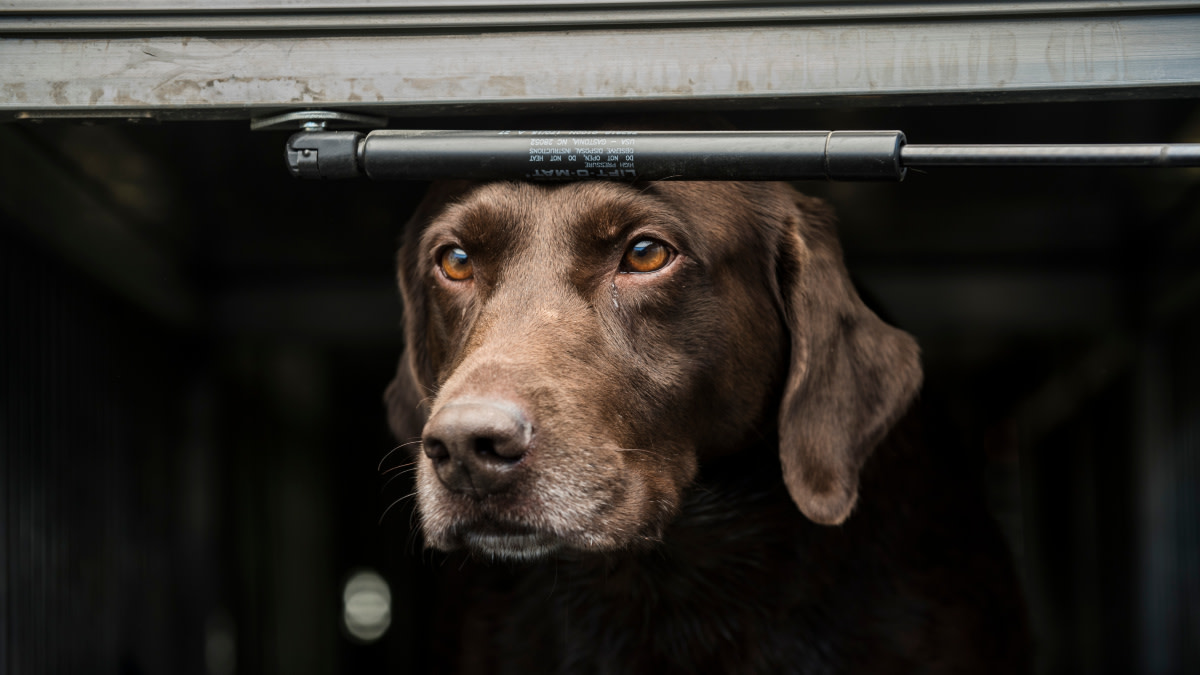
Many hunters believe their only job is to teach their dog how to hunt. In reality, a good handler will focus on keeping their dog happy, healthy, and safe. A halfway-decent bird dog will know the basics of finding a sweet-smelling bird as soon as his wobbly legs will hold him up. But to listen, take direction, and keep away from danger? Not so much.
One tool that is a must for all sporting dog owners is a good crate designed to withstand serious abuse. This is the foundation for teaching a dog that he or she has a den to go decompress and gear down. The crate also has obvious safe travel implications.
When it comes to the down-time behavior, Connecticut-based dog trainer Joe Lussier says crate-training is essential. “We all know a good crate will keep a dog safe during travels, but it can also be used to teach a puppy patience, bladder control, and how to really fine-tune their own off switch.”
The key, Lussier said, is to start your bird dog on crate-training as soon as you bring it home. “I recommend a day-one training strategy so that your puppy becomes familiar and comfortable with the crate. This is all built on consistency, which is where most amateur handlers fall short.”
In other words, you won’t allow a dog to develop comfort in its crate if he or she only has to go in there once every three weeks. Instead, you’ve got to build the crate into his or her everyday life to ensure that the dog fully understands its role. This can be as easy as feeding the puppy in the crate every day at a set time, which helps build an association with the crate as a good place to be. It’s important to note that you don’t want to water your pup in his crate, however. This leads to spills and wet bedding—both of which can be a pain for you and uncomfortable for the canine.
You’ll naturally want to use a command to tell your dog to get into the crate, which can later be used to tell your dog to get into anything, like a field blind or a duck boat. “Kennel up” is the most common and it works just fine, but like all aspects of training you’ve got to be consistent.
While your dog might associate food or other positive experiences with getting into the crate, any retriever or pointer with base-level mental bandwidth is going to learn pretty quickly that they don’t always want to be caged up. This can lead to pre-release issues like whining, and the dog anticipating the kennel door swinging open so they can bound their way to freedom.
This is the back end of crate training, and it ties into steadiness and patience—two key components of all good sporting dogs. Crate training done correctly allows you to teach a release command so that the puppy learns that not only are you in control when it has to enter something, but also when it gets to exit. This might not seem important when you’re working 30-second drills in the house, but when you’re in the field with a 10-month old and it doesn’t care one whit about steadiness and your ability to control it, you’ll realize how important those small lessons were.
Get a properly sized, well-built crate as soon as you plunk down a deposit on your pick of the litter. After that, incorporate the kennel into your puppy’s routine with consistent, simple lessons. Not only will this help you build a solid obedience foundation, but it’ll provide an easy way to keep your dog safe for the rest of its life.
Feature image via John Hafner.




Conversation